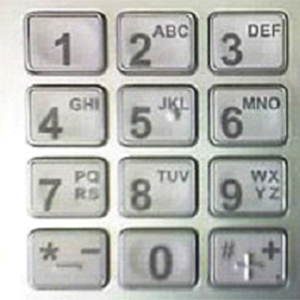Editor’s Note: Jeremy Opperman is a member of Rotary’s Diversity, Equity, and Inclusion taskforce and a regular contributor to this blog on issues related to disability inclusion.

By Jeremy Opperman, Rotary Club of Newlands, Cape Town, South Africa
I had just finished keying in my pin number on the card reader at the supermarket checkout counter recently when the cashier turned to my friend and asked, “how does he know which buttons to press.”
Being completely inured to this sort of thing, I watched with interest to see how my friend would react. It is peculiar that when encountering a person with a disability, many people very often address the person accompanying them rather than addressing us directly.
As I expected, my friend, being worldly and level-headed, responded perfectly. She smiled (with her eyes, as her mask would have hidden her actual facial alteration) and said, “Why don’t you ask him, he is standing right in front of you.”
To her credit, the cashier did exactly that, although with some hesitation.

I enthusiastically explained the apparent magical mystery of how a blind person can key in their pin number into a card reader. The cashier was particularly fascinated to learn that every keypad has a raised dot on the 5 button allowing us to orientate to the other numbers on the keypad.
I smiled because I know this accessibility feature – ubiquitous on all keypads and even telephones – is universally unknown to most people who use these devices every day.
Similarly, most people are totally surprised to learn that the F and J keys on all keyboards are marked in a similar way, allowing the visually impaired to know where they are on the keyboard.
Many people avoid communication with people with disabilities in everyday situations, almost as if they fear the interaction. It’s so common that those of us with disabilities have a name for it:
Does he take sugar.
However, the lesson in this story is not only for people who practice this bizarre habit of addressing our colleagues instead of us, but also for those who are being addressed in proxy. Volcanic and rude responses do not help the situation. Ignoring it is just as bad.
My friend had the best response, “why not ask him, he is right here.”
It’s also all too frequent for an unaccompanied person with disability to be totally overlooked, often very blatantly, even by service staff. This happens to people who use a wheelchair quite frequently and is a well-researched and documented phenomenon. It’s as if their reduced height renders them an infant in the eyes of the observer. It occurs in workplaces and among friends, in all kinds of situations where the person’s input would have been rather useful.
Which reminds me of a time not too long ago when I had gathered with a group of friends at one of their homes and we were attending a Zoom meeting together sharing one laptop.
Suddenly, the place was plunged into darkness.
As alternative battery power was being arranged, there was a mad scrum as at least three people scrambled to set up the laptop with power, external speakers, and microphone cables all in total darkness. There was a fair amount of tension as they argued about which port and jack were to be used for each external device.
Not one of them thought to ask the only person in the room with the unequivocal experience to do the job, which he literally could have done with his eyes closed.
https://blog.rotary.org/2021/11/05/lessons-in-disability-inclusion-does-he-take-sugar/

